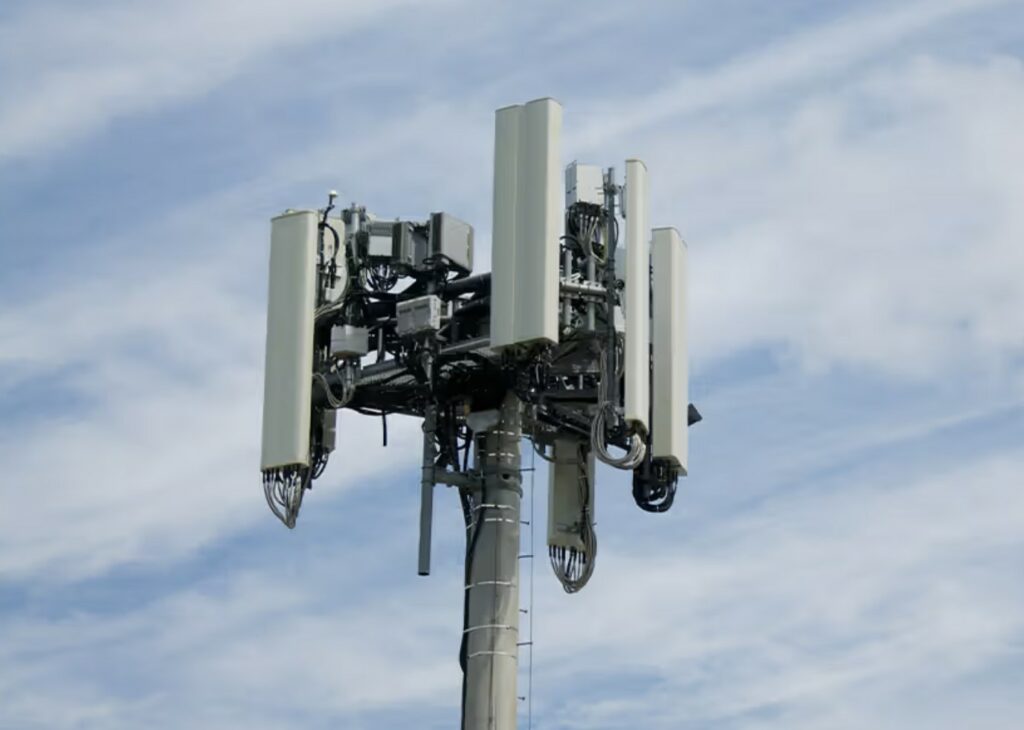
The Government would have us believe that “there may be a small increase in overall exposure to radio waves when 5G is added to an existing network or in a new area” but that “there should be no consequences for public health”. Is this actually the case? On what evidence has this statement been made?
I have just read the four 5G case studies carried out this year by Professor Lennart Hardell and Mona Nilsson, in which eight people developed debilitating symptoms after the installation of 5G masts next to their accommodation, where precise radiation measurements were taken. The results put a big question mark over the Government’s statement.
Has our Government ignored the worldwide appeals and consensus statements made by independent scientists and doctors, calling for a revision of safety guidelines and a halt to the rollout of 5G on the basis of research on the much lower levels of pre-5G emissions? These include:
- 433 scientists who have signed the EU 5G appeal,
- 259 scientists from 44 nations who have signed the international EMF scientist appeal
- 164 scientists and medical doctors as well as 95 non-governmental organisations who have signed the EMF Call.
There is also the compelling 2020 Consensus Statement of U.K. and international, medical and scientific experts on the health effects of non-ionising radiation, signed by organisations representing 3,500 medical doctors throughout the world, initiated by the Physicians’ Health Initiative for Radiation and Environment (PHIRE).
The lead author of the four 5G case studies is Professor Hardell, an oncologist and leading researcher from the Swedish Research Foundation for Environment and Cancer. He was the first in the world to publish results on elevated cancer risks with mobile phone use. His co-author, Mona Nilsson, is Director of the Swedish Radiation Protection Foundation, which seeks, in the absence of information from the Government or the media, to inform people of the risks.
But before we look at the 5G case studies, let’s take a brief look about what is already known about the health risks of previous mobile communications technology. The updated Bioinitiative Report has listed thousands of studies on the adverse health effects of pre-5G technology. A clear majority of studies shows:
A clear and consistent pattern of adverse effects that form the basis of the mechanisms whereby RFR [radiofrequency radiation] can cause the cancers seen in human populations. Of 261 studies looking at oxidative effects from RFR exposure, 240 (91%) showed damage. Of 346 studies on effects of RFR on genes, 224 (65%) reported genetic damage. Oxidative stress and genetic damage are the major mechanisms leading to cancer. In addition, RFR exposure causes effects on brain and behaviour. Of 336 studies published on RFR neurological effects, 73% reported effects and only 27% showed no effect.
Moving on to 5G itself, what is different about it? It does not yet use millimetre wave bands, as these will not be allocated until about 2025 for use in 70 U.K. cities. Up-to-date information about health research on millimetre waves can be found on this webpage produced by Joel M. Moskowitz, Ph.D. from the School of Public Health at the University of California, Berkeley. At present, 5G runs on the lower frequencies of 3.4 to 3.8 GHz in the U.K., but what is very novel is the addition of complex new technology, such as beamforming, massive MIMO and phased arrays. Professor Hardell says:
The effects of the exposure depend not only on the carrier frequency, for instance 3.5 GHz as for 5G, but also, and perhaps more importantly, on the modulation and pulsation of the signal and the peak and average intensity. Pulsed signals and simultaneous exposure to several frequencies… were considered more hazardous. The observed effects increased with duration of exposure.
The Hardell-Nilsson case studies are groundbreaking because, incredibly, they study human beings in a real-life 5G environment for the very first time.
The four 5G case studies themselves, published in January, February, April and June this year, deal with acute health effects, i.e., symptoms which come on very quickly after exposure, whereas some of the information at the start of this article refers to chronic effects, i.e., illnesses which develop over years such as cancer or Alzheimer’s.
All four studies describe how previously healthy people very quickly developed symptoms of microwave syndrome after 5G phone masts were installed above or opposite their accommodation at distances of between five and 60 metres. Most of the symptoms disappeared within days of them moving to less irradiated accommodation, but reappeared when they returned to the strongly irradiated accommodation.
Their symptoms included neurological symptoms, headaches, tinnitus, fatigue, insomnia, emotional distress, skin disorders, joint and muscle pain, cardiovascular abnormalities and blood pressure variability. Participants were asked to fill in questionnaires about their health before the 5G masts had been installed, after installation and after they had moved away to less irradiated accommodation. They were asked to grade the severity of their symptoms, with 10 being unbearable. The results are produced in tables in the studies and show that some symptoms were unbearable while near the 5G mast and even more so for the female participants.
Prepare now! Protect your home and cars againts EMP, solar flare and lightnings…
The four studies are highly readable and full context is given. I will however mention individual features of particular interest.
Precise radiation measurements are given for different areas of the apartments in relation to the distance from the masts involved. In the first study it is noteworthy that readings of the radiation levels prior to the 5G mast deployment were available. The couple had lived in this apartment for 10 years under a 3G and 4G mast without obvious health problems and, when they heard that the mast was to be upgraded, arranged for measurements to be taken beforehand. The maximum (peak) measurement was 9,000 μW/m2. However, after installation of the 5G mast, very high RF radiation with maximum levels of 354,000, 1,690,000 and over 2,500,000 μW/m2 were measured at three occasions in the bedroom, which was located only five metres below the new 5G base station. Levels in the other three studies were similarly high after the installation of the 5G masts.
Thus it is clear that the deployment of 5G leads to a massive increase in radiation levels, contrary to what our Government has told us. The increase from 9,000 to 2,500,000 µW/m2 can hardly be described as a small increase and the symptoms arising cannot be written off with the phrase “no consequences for public health”.
Yet even these high levels are well below the limits which are supposed to be ‘safe’, according to the International Commission on Non-Ionising Radiation (ICNIRP). ICNIRP’s guidelines are accepted in the U.K., USA and parts of Europe, but only allow for thermal effects (i.e., assume that health will only be damaged if body tissue is heated). They allow exposure to be as high as 10,000,000 μW/m2 averaged over 30 minutes and 40,000,000 μW/m2 of local exposure averaged over six minutes.
These limits do not allow for longer exposure or chronic effects and ignore studies showing health damage below the thermal threshold. The International Commission on the Biological Effects of Electromagnetic Fields has concluded that “the assumptions underlying ICNIRP’s exposure limits are invalid and continue to present a public health harm”. In addition, ICNIRP has been strongly criticised for having ties to the telecommunications industry.
In the fourth article, Hardell addresses the difference between microwave syndrome and electromagnetic hypersensitivity (EHS), which both seem to have similar symptoms:
Unlike the microwave syndrome, individuals suffering from EHS can develop debilitating symptoms at extremely low exposure levels that are tolerated by most other people. That is in contrast to the very high RF radiation levels seen in our four case studies where healthy individuals, with no prior major reactions to wireless technology, developed symptoms.
However, the participant in the second study found that, although his symptoms completely disappeared after six weeks of living in a low radiation apartment, his “arthralgia and headache reappeared rather quickly whenever he visited places with high radiation such as Stockholm City”. He estimates that “his sensitivity to RFR has increased” since living in the office below the 5G base station. Could this mean that he is on the way to developing EHS? The highest RFR measurement found in Stockholm last month was 5,271,555 µW/m2.
Set against these high levels are the vastly different safety exposure levels for RFR recommended by certain expert groups. In 2016, the European Academy of Environmental Medicine (EUROPAEM) recommended limits of 0.1 to 100 µW/m2 for frequencies from 900 MHz to 5.6 GHz, depending on sensitivity and whether exposure was during the day or at night. Already in 2012, the Bioinitiative Report had suggested a limit of 30 to 60 μW/m2 and lower still for sensitive persons and children at 3 to 6 μW/m2. These recommended safety limits along with others from different advisory groups are set out in Table 1 in Hardell’s first study.
A great documentary on this subject (if any of you have enough time to watch it all!
Yesterday, I spoke to Mona Nilsson, one of the authors of these 5G case studies. She is appalled that the public is now exposed to such high and clearly dangerous levels of RF radiation and not only in city centres but in people’s own homes, where they are irradiated without informed consent. Many people in this situation cannot afford to move away.
Nilsson emphasised that there is no protection against adverse health effects that are not caused by heating of tissue, nor against the effects of chronic exposure. She is shocked that there has been no request from authorities for studies proving the safety of 5G, as indeed Senator Blumenthal realised in 2019 when he said:
“So there really is no research ongoing. We’re kind of flying blind here, as far as health and safety is concerned.”
In her opinion, the telecoms industry is now acting in the same way as the tobacco industry did in the past. Experts who question the safety of RFR are smeared or silenced. Journalists, decision-makers and some experts have been bought by the telecoms industry. She says that a small group of experts on RF radiation denying health harms sit on the most influential advisory boards, and that those who disagree are never invited to join them to broaden the debate, despite the fact that the dissenters may represent the majority of expert opinion. [Visit the Daily Sceptic for more]
Hey guys, it’s time to wake up!
If a few more people choose to support my work, I could expose more lies, root out more corruption, and call out more hypocrites. So, if you can afford it, please support my endeavor by either using PAYPAL or the DonorBox below (PAYPAL & Credit Cards / Debit Cards accepted)…
If you are a crypto fanatic, I do now accept crypto donations:
BTC: 1AjhUJM6cy8yr2UrT67iGYWLQNmhr3cHef (Network: Bitcoin) USDT: 0x490fe5d79d044a11c66c013e5b71305af0a76c1b (Network: Etherum ERC20)
You should join my newsletter to get a daily compilation of different breaking news, pictures and videos… YOU WILL LOVE IT!
Thank you,
Manuel












